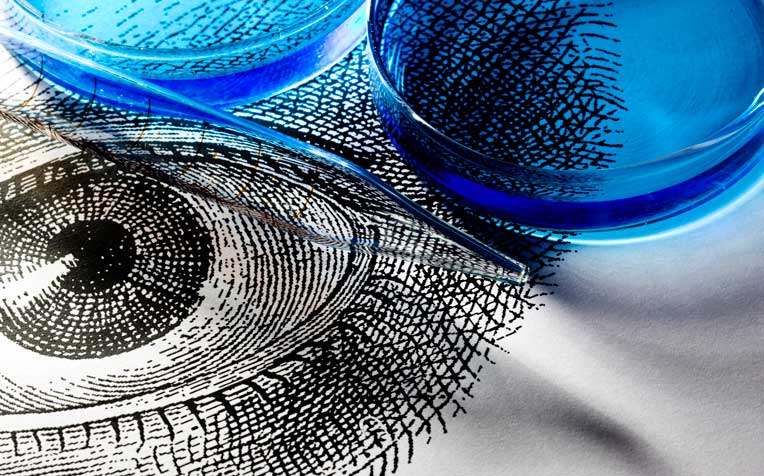
Dry eyes occur if your eyes do not produce enough tears.
For almost three years, she struggled to find ways to deal with her dry eyes. Each time she blinked, Mrs Ng Guan Lee felt as if a knife was slicing a layer off the surface of her eye.
Sometimes, the pain got so bad, it kept her up at night. Then, relief came in the form of eye drops made from her own blood. "The plasma eye drops are really soothing to my eyes. They take away the dryness and don’t irritate my eyes as they are made of my own protein," said Mrs Ng.

Her condition was brought on by multiple operations to treat a retinal problem in her eye. Besides using over-the-counter lubricating eye drops to relieve the symptoms, she tried to avoid air-conditioned areas where possible, and even installed a humidifier in her bedroom so her eyes would not become dry. However, the frequent use of eye drops brought on other problems.
"The commercial eye drops relieved my symptoms only temporarily, so I was using them every half an hour, especially when I had to work on my computer for a long period. After a while, I started getting a gritty feeling in my eyes. On some days, my eyes became so inflamed, I had to rush to the emergency department," said the 55-year old procurement manager in the telecommunications industry.
Commercial products are not able to completely replicate the tears we produce, which contain many proteins. Researchers from the Singapore Eye Research Institute (SERI) and Singapore National Eye Centre (SNEC), both members of the SingHealth group, believe that the closest substitute is plasma – the yellowish fluid in blood that carries all the different blood cells.
"While its composition is not perfectly identical to tears, plasma contains many proteins that are present in tears. The proteins provide a normal, anti-inflammatory environment for the eye surface and, therefore, plasma could well be a tear substitute," said Prof Louis Tong, Senior Consultant at the Corneal and External Eye Disease Department, SNEC, and lead investigator of the study.
Relief for dry eyes
Dry eye, a common condition that affects the quality of life of its sufferers, is caused by multiple factors such as ageing, trauma to the eye or certain disease conditions. It may also be a side effect of certain drugs or treatment. For example, Mr Hartono Hoesny, 61, developed dry eyes after undergoing a bone marrow transplant for cancer. He also tried several over-the-counter eye drops and eye gels, but found relief only when he joined the study and started using the plasma eye drops.
Patients in the study undergo a painless one-hour procedure, similar to a blood donation, to extract the plasma from their blood. The plasma is then placed in narrow tubes clamped about an inch apart.
Stored in the freezer
Patients store these tubes in the freezer and break off the required segments for their daily use. Some, like Mr Hoesny, even double-bag them before keeping them in the freezer to ensure they do not get contaminated.
Click to next page to learn more about dry eyes and treatment.
Ref. L20
Contributed by


















 Get it on Google Play
Get it on Google Play